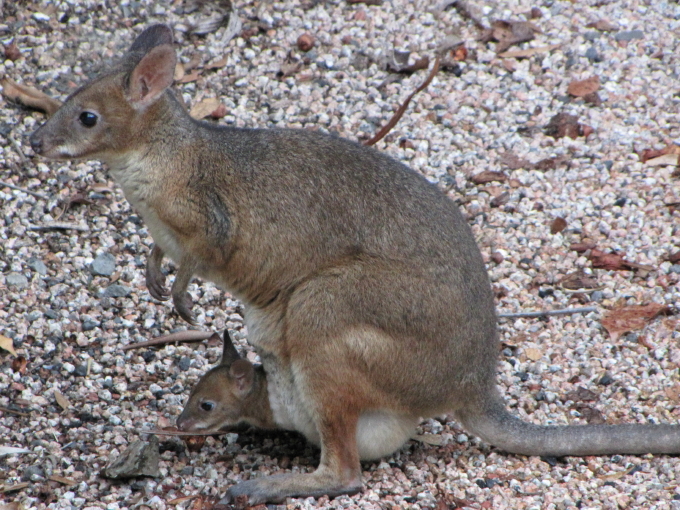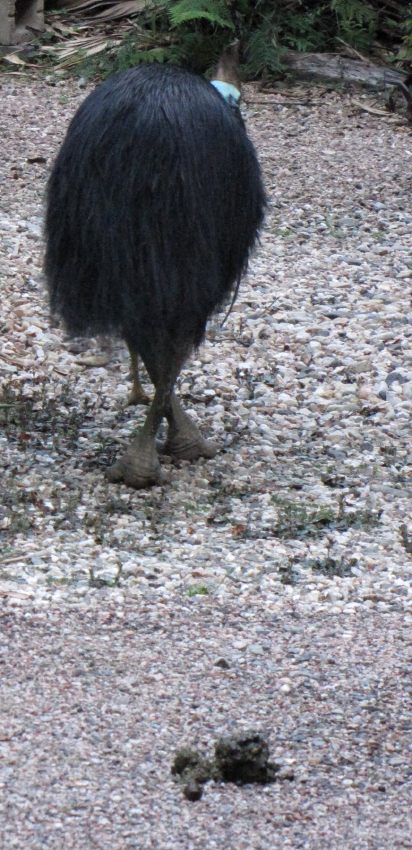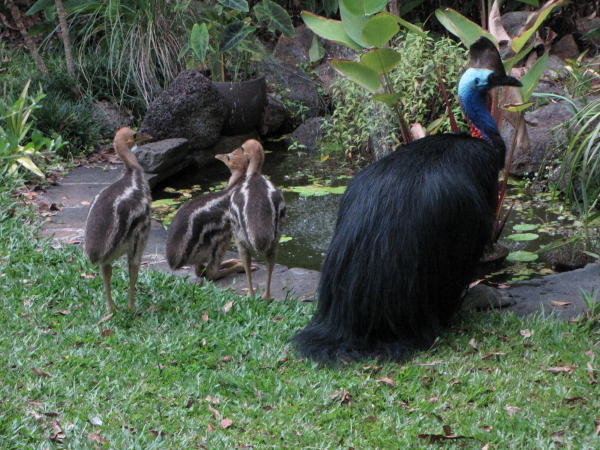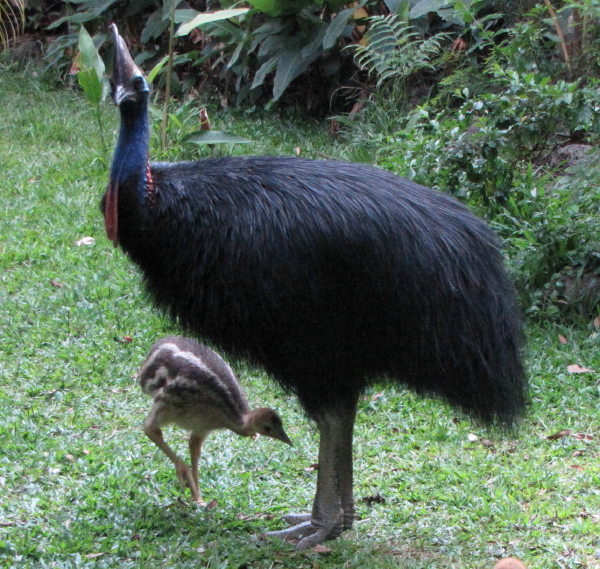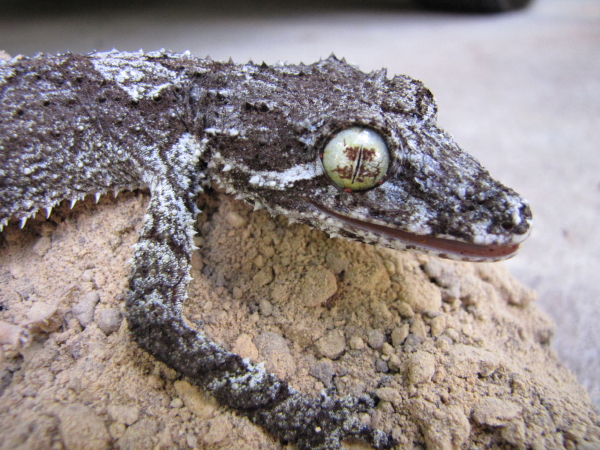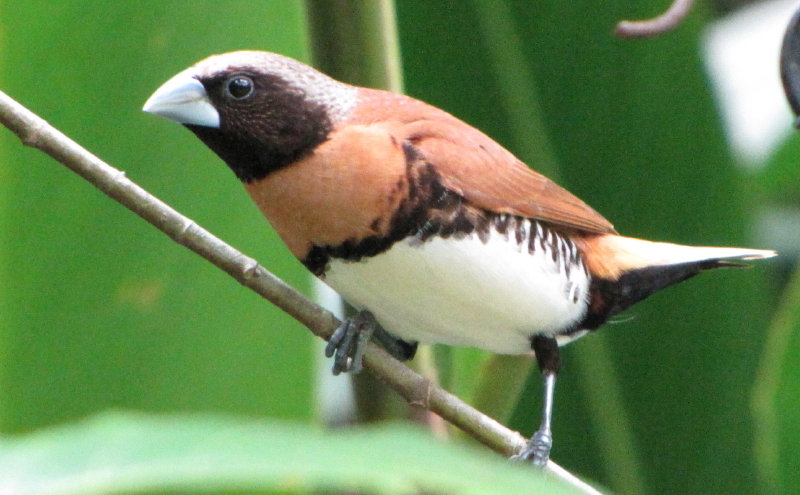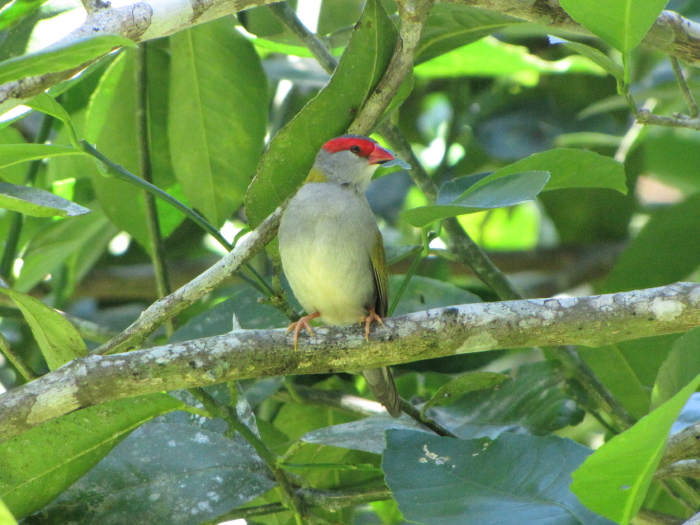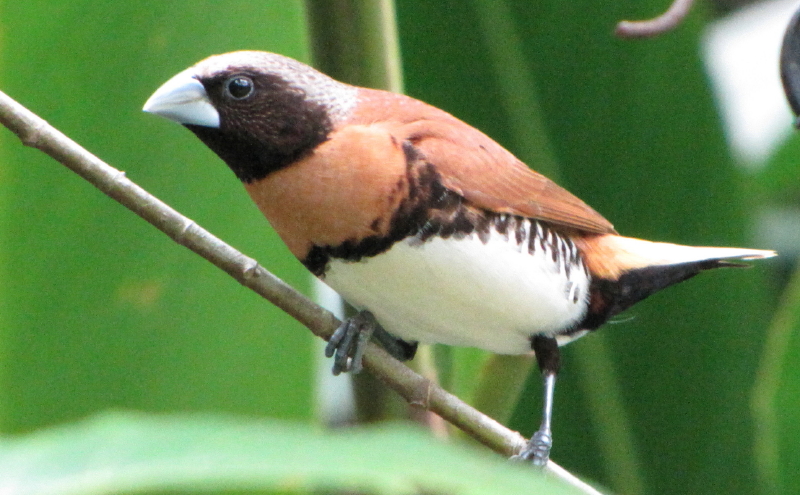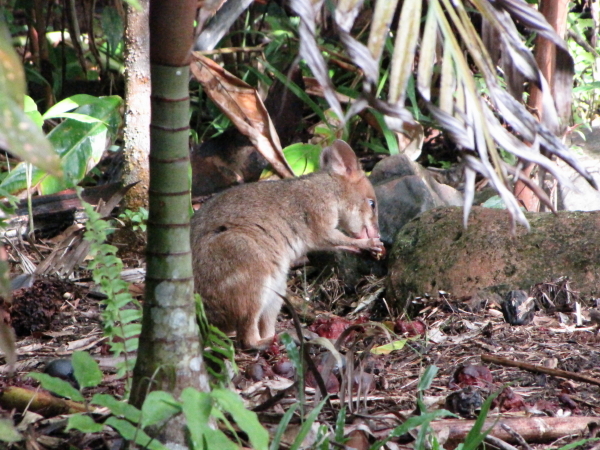
We’ve had hardly any rain for the last 5 months and the frogs’ sex drive seem to have reached monsoonal levels, the weather pattern has not. Many frogs have started to call from their hiding places during the day (mainly Litoria caerulea, common green tree frogs and Litoria infrafrenata, white-lipped tree frogs, but also Litoria rothii, northern laughing tree frogs and Litoria jungguy, northern stony creek frog) for the last few weeks.
Michel, who visited from Switzerland a year ago, was surprised that Australian frogs are only active at night, not like the European frogs. (I think, here they avoid the harsh sunlight).
Yesterday, we finally got more than a drizzle, about 16mm over 20 hours, and we had a very different New Year’s evening party in our garden and forest:
The male in the photo was already successful in attracting a female, but the other two nearby called through the night, usually well-synchronized, taking turns, sometimes calling more than 100 times before stopping for a recharge.
Later in the night they were joined by Dainty Green Tree Frogs (Litoria gracilenta), and in the morning we found a lot of spawn in our pond.The eggs of those 2 species look very similar, floating in small rafts on the surface.
Amongst the birdseed in our feeder, there was a different egg: this morning a chestnut-breasted mannikin (Lonchura castaneathorax) lost(?) one there. How/why does that happen?
Many bird species are feeding their fledglings at the moment,
Graceful Honeyeaters (Meliphaga graclis), Mistletoe Birds (Dicaeum hirundinaceum), Pale-yellow Robins (Tregellasia capito) and Wompoo Fruit-Doves (Ptilinopus magnificus) are just some of them.
The young pademelon female (Thylogale stigmatica), presented in our “pademelon courtship” blog 5 months ago, now has a pouch young, which should soon be big enough to explore the world on its own feet.
Cassowary dad visits daily with his chicks, leaving droppings behind everywhere. They contain many seeds, e.g. Kuranda Quandong (Elaeocarpus bancroftii), Black Palm (Normanbya normanbyi) and Northern White Beech(Gmelina fasciculiflora).
Wishing you all a happy and fertile new year:



